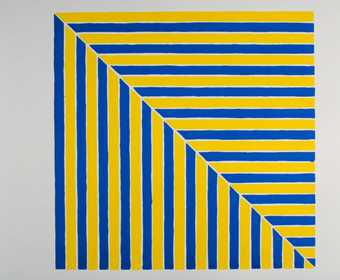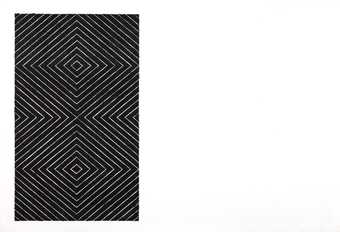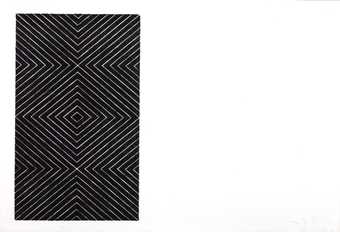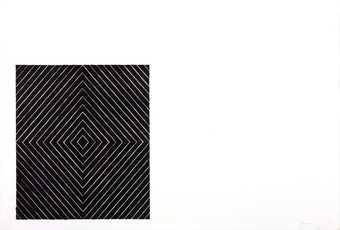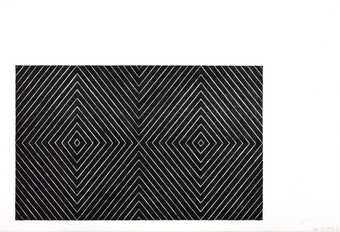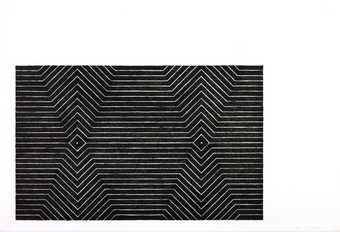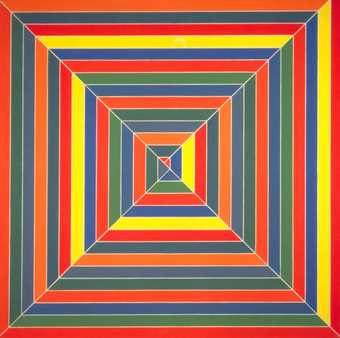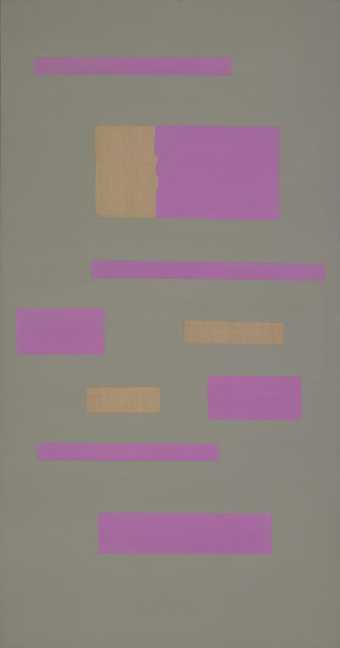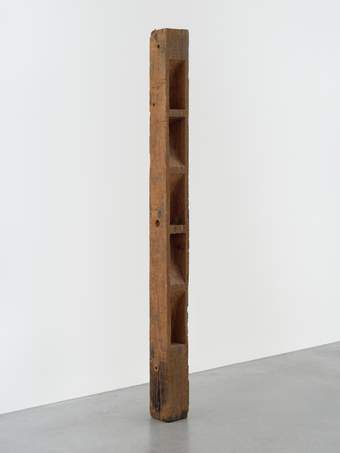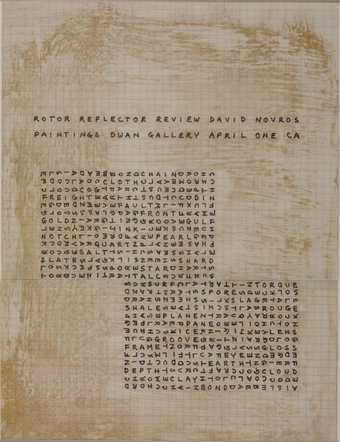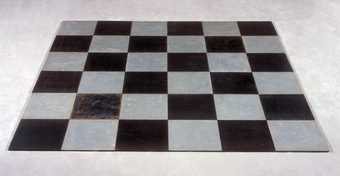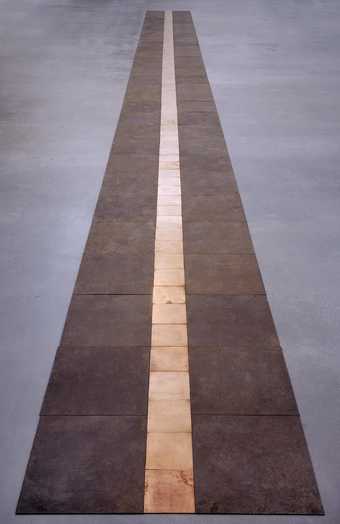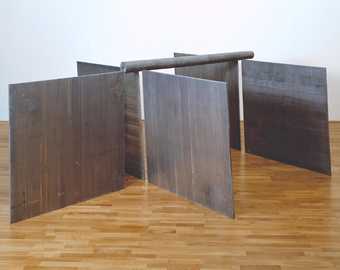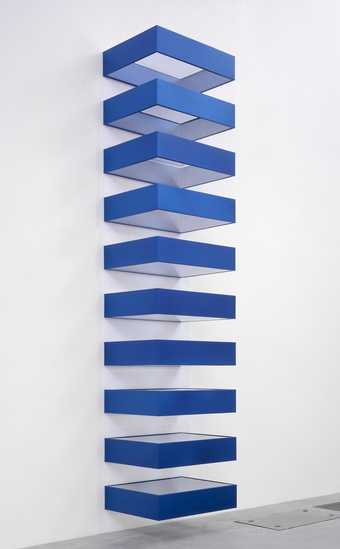Not on display
- Artist
- Carl Andre born 1935
- Medium
- Firebricks
- Dimensions
- Object: 127 × 686 × 2292 mm
- Collection
- Tate
- Acquisition
- Purchased 1972
- Reference
- T01534
Display caption
Each of Andre’s Equivalent series consists of a rectangular arrangement of 120 firebricks. Although the shape of each sculpture is different, they all have the same height, mass and volume, and are therefore ‘equivalent’ to each other. Andre’s sculptures are often assembled using common industrial materials, which he arranges into a simple geometric pattern. His sculptures are always placed on the floor rather than on plinths. Not simply objects to look at, they become part of the environment, altering the viewer’s relationship to the surrounding space.
Gallery label, October 2016
Does this text contain inaccurate information or language that you feel we should improve or change? We would like to hear from you.
Catalogue entry
T01534 Equivalent VIII 1966
Not inscribed
Firebricks, 120-unit rectangular solid, 2 high x 6 header x 10 stretcher, 2 1/2 x 4 1/2 x 9 (6.4 x 11.4 x 22.9) each, 5 x 27 x 90 1/8 (12.8 x 68.5 x 229) overall
Purchased from the artist through the John Weber Gallery, New York (Grant-in-Aid) 1972
Exh: Grids, Institute of Contemporary Art, Philadelphia, January-March 1972 (works not numbered) as 'Untitled (from Equivalents) C'; Carl Andre: Sculpture 1959-78, Whitechapel Art Gallery, London, March-April 1978 (8, repr.)
Lit: David Bourdon, 'The Razed Sites of Carl Andre' in Artforum, V, October 1966, p.17; Diane Waldman, Introduction to exh. catalogue Carl Andre, Guggenheim Museum, New York, September-November 1970, p.15; Richard Morphet, 'Carl Andre's Bricks' in Burlington Magazine, CXVIII, 1976, pp.762-7, repr. p.765; exh. catalogue Carl Andre: Sculpture 1958-1974, Kunsthalle, Bern, April-June 1975, No.1966-8 as 'Equivalent VIII'
The circumstances in which Andre's brick sculptures were first created have been summarised by David Bourdon, loc. cit.: 'For some time it had been apparent to Andre that his sculpture should be low. In summer, 1965, while canoeing on a New Hampshire lake, he realised his sculpture had to be as level as water. For his second show at the Tibor de Nagy Gallery in March 1966, Andre created an astringent environment by setting eight rectilinear mounds of 120 bricks each on the gallery's parquet floor'. 120 was chosen because it was a number particularly rich in factors. The bricks had to be stacked in two layers to prevent them drifting apart and to give the pieces sufficient mass. Thus the top layer of each mound had only 60 bricks. The bricks were assembled in only four out of six possible combinations: 3 x 20, 4 x 15, 5 x 12 and 6 x 10. (In bricklaying, bricks laid end to end are called a stretcher course and bricks laid side by side are called a header course; thus the pieces may be described as 120 bricks in two courses each, i.e. 3 header x 20 stretcher and 3 stretcher x 20 header etc.). The same 6 x 10 combination, for example, could be either an elongated rectangle or a near square, depending on the orientation of the bricks. Although each of the eight shapes was different, they all occupied the same amount of space in cubic centimetres, which accounted for their visual equivalence. He therefore entitled this exhibition Equivalents (which was also the title of Alfred Stieglitz's series of cloud photographs).
Andre added on 12 May 1972 that none of these pieces was sold from the Tibor de Nagy exhibition and he afterwards returned all but 200 of the bricks to the brickyard to get his money back. The original bricks were sand-lime bricks from the Long Island City Brickworks. When he decided to reconstruct the pieces several years later he found that this brickworks had closed, so he used firebricks instead. These are approximately the same size, but yellowy-brown instead of bluish white. Only one brick piece made of sand-lime bricks survives, a 6 x 10 configuration belonging to Mr and Mrs Manuel Greer, New York. He remade all the brick pieces in 1969, including a second version of this sand-lime piece. It was important that the bricks should be light in colour and solid, without holes.
A documentation drawing for this sculpture showing how the bricks should be assembled belongs to John Weber, New York, and there is a photostat copy of it in the Gallery files. Andre originally designated each brick piece with a letter, the one for this being 'C'.
Andre's exhibition of these brick pieces at the Tibor de Nagy Gallery in 1966, consisting of eight 'islands' of bricks placed in meticulous rectilinear relationship within the gallery space, was indicative of his growing interest in environment, and was followed by an exhibition at the Dwan Gallery, Los Angeles, in 1967 in which the gallery floor was covered with concrete capstone blocks (2 x 8 x 16in - 5 x 20.3 x 40.6cm - each) apart from eight 'holes' which corresponded to the original 'islands'.
Andre emphasised that a key change for him was the move from cutting into materials (as in the case of 'Last Ladder') to constructing works out of standard units which were already cut.
Three-and-a-half years after this work had been acquired, and after it had been on exhibition twice, it became the centre of a storm of controversy prompted by a contentious article by Colin Simpson in The Sunday Times of 15 February 1976 entitled 'The Tate drops a costly Brick'. The matter was then widely taken up in the national press, and discussion raged for several weeks afterwards.
Published in:
Ronald Alley, Catalogue of the Tate Gallery's Collection of Modern Art other than Works by British Artists, Tate Gallery and Sotheby Parke-Bernet, London 1981, pp.11-12, reproduced p.11
Film and audio
Features
Explore
- abstraction(8,615)
-
- non-representational(6,161)
-
- geometric(3,072)
- formal qualities(12,454)
- education, science and learning(1,416)
-
- mathematics(53)
You might like
-
Frank Stella Untitled (Rabat)
1964 -
Frank Stella [title not known]
1967 -
Frank Stella [title not known]
1967 -
Frank Stella [title not known]
1967 -
Frank Stella [title not known]
1967 -
Frank Stella [title not known]
1967 -
Frank Stella Hyena Stomp
1962 -
Ad Reinhardt Abstract Painting
c.1951–2 -
Carl Andre Last Ladder
1959 -
Carl Andre 144 Magnesium Square
1969 -
Carl Andre Rotor Reflector Review
1967 -
Carl Andre Steel Zinc Plain
1969 -
Carl Andre Venus Forge
1980 -
Richard Serra 2-2-1: To Dickie and Tina
1969, 1994 -
Donald Judd Untitled
1990


